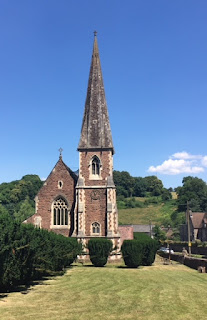WALKING THE WYE VALLEY
Secluded charm, ancient woodland and the majestic
river Wye.
Rambling through the Wye Valley, the ruins of Tintern Abbey come into view – beauty in stone in an Area of Outstanding Natural Beauty. The chants of long-ago monks seems to echo round these stones.
Perhaps the most unspoilt river valley in Britain, the Wye flows though breathtaking scenery rich in both Welsh and English history. From the source of northern Wales down to the Bristol Channel, the river passes many evocative and famous sites – Symonds Yat, Kilvert country, Tintern Abbey – and conjures up vivid memories of the 19th century Wye-tourers in search of the ‘picturesque’.
The area enjoys a relatively mild climate and its vineyards continue the tradition of producing wines probably started by the Romans. Over 800 years ago an abbey was built at Tintern and its ruins still stand tall. Further downstream lies the historic border town of Chepstow with its early Norman, stone built castle.
We’ll follow sections of the Wye Valley Walk, the Offa’s Dyke Path and surrounding trails meandering along the hillsides high above the majestic River Wye often emerging at superb viewing points such as Symonds Yat Rock and the Eagle’s Nest. We can take in the area’s rich history and discover the myths and legends of these borderlands.
The River Wye (Welsh: Afon Gwy) is the fifth-longest river in the United Kingdom. The upper part of the river passes through the settlements of Rhayader, Builth Wells and Hay-on-Wye, but the area designated as an AONB covers 326 square kilometres (126 sq mi) surrounding a 72-kilometre (45 mi) stretch lower down the river, from just south of the city of Hereford to Chepstow
This area covers parts of the counties of Gloucestershire, Herefordshire and Monmouthshire, and is recognised in particular for its limestone gorge scenery and dense native woodlands, as well as its wildlife, archaeological and industrial remains. It is also historically important as one of the birthplaces of the modern tourism industry. The area is predominantly rural, and many people make a living from tourism, agriculture or forestry.
The Lower Wye landscape was formed by the river acting on a series of layers of rock, the river has incised into the margins of the Old Red Sandstone plateau to form a gorge with substantial river cliffs. The steepest parts of the Wye gorge are cut through the Carboniferous Limestone. Here the combined action of the river, natural joints in the rocks and quarrying have exposed many vertical faces, particularly between Tintern and Chepstow. Geological interest extends underground, and there are many rock shelters and solution caves in the area.
The first brass made in Britain was founded at Tintern in 1566. Wire-making followed, with water mills situated on all the tributaries of the lower Wye. The area resounded to the noise and smoke of heavy industry for the next 400 years and gave rise to many pioneering industries. At Redbrook, copper works were established by 1691, and a century later the village became one of the world's major tinplate manufacturing centres.

























